The Japanese carpenter ant (Camponotus japonicus) is a widely-distributed species that occurs throughout much of East Asia, from Pakistan and Mongolia, east to China, Russia (eastern Siberia), and the Philippines, and Japan. Like other carpenter ants, colonies, which can consist of thousands of individuals, occurs in dead and decaying wood, such as logs and the dead, hollowed-out part of standing trees. A colony consists of two castes: one includes reproductive males and females and the other is made up of workers, which are sterile females. There are three sizes of workers, based on their function, the largest of which function as soldiers. The Japanese carpenter ant has some interesting relationships with other organisms. For example, like many ants, they ‘farm’ aphids for honeydew. They are also hosts to a butterfly, Niphanda fusca, which exhibits behavior similar to that of a cuckoo bird. The butterfly uses chemical mimicry by releasing cuticular hydrocarbons that mimic those of the ant, to trick the host worker ants into adopting it while it is a third-instar caterpillar. From there, the caterpillars are fed by the worker ants as though it were one of their own young! In 2009, Epoch released a set of six Japanese carpenter ants. These were probably the first figures of this species! Takara Tomy A.R.T.S. produced one for their B.I.G. Insects collection in 2017 and just last month (December, 2022) Bandai produced one for their Diversity of Life on Earth line. Kaiyodo was supposed to produce one in late 2022 for their Revogeo line, but it looks like it never materialized.
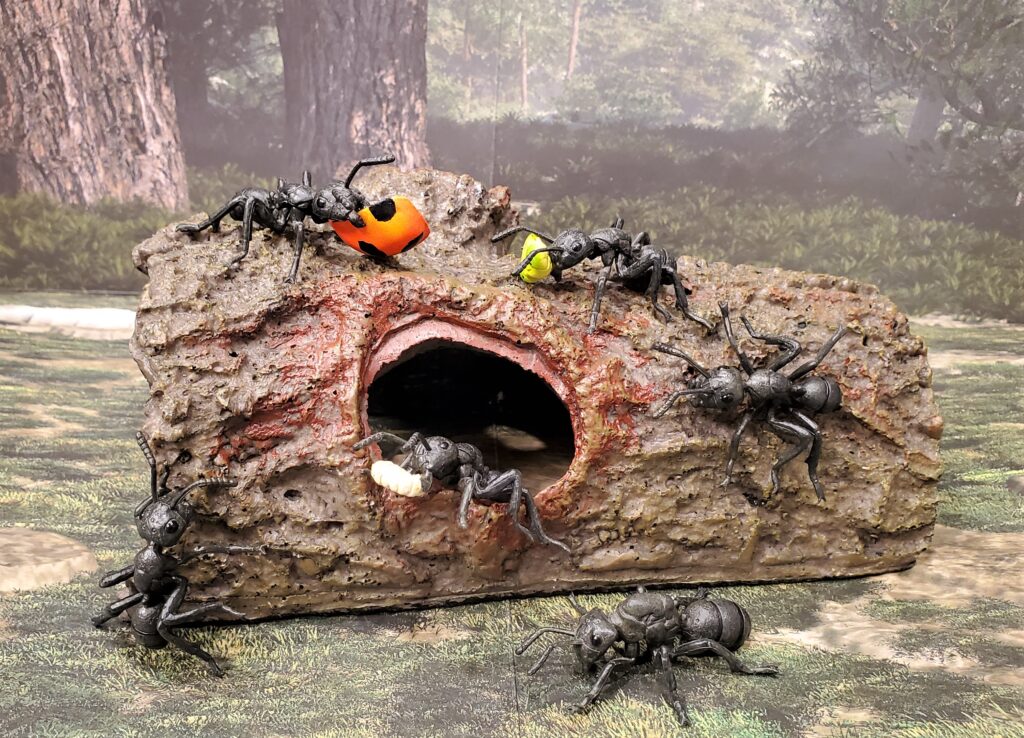
There are five components to this Epoch set: 1) queen, 2-4) three workers, each carrying various items in their mandibles (these items are separate pieces yet fit snuggly in the mandibles of the ant) and 5) a pair of workers. The queen measures 4.5 cm for a scale of 2.6:1. The workers measure 4.0 cm for a scale of 6.6:1-2.6:1 depending on their function. Despite being very similar, these workers are not all the same sculpt. There appears to be (at least) three sculpts for the workers. Also, there is a minor anatomical error with the workers. With C. japonicus, only breeding males and females possess ocelli (simple eyes), but some of the workers here are sculpted with ocelli.
First, let’s look at the queen:
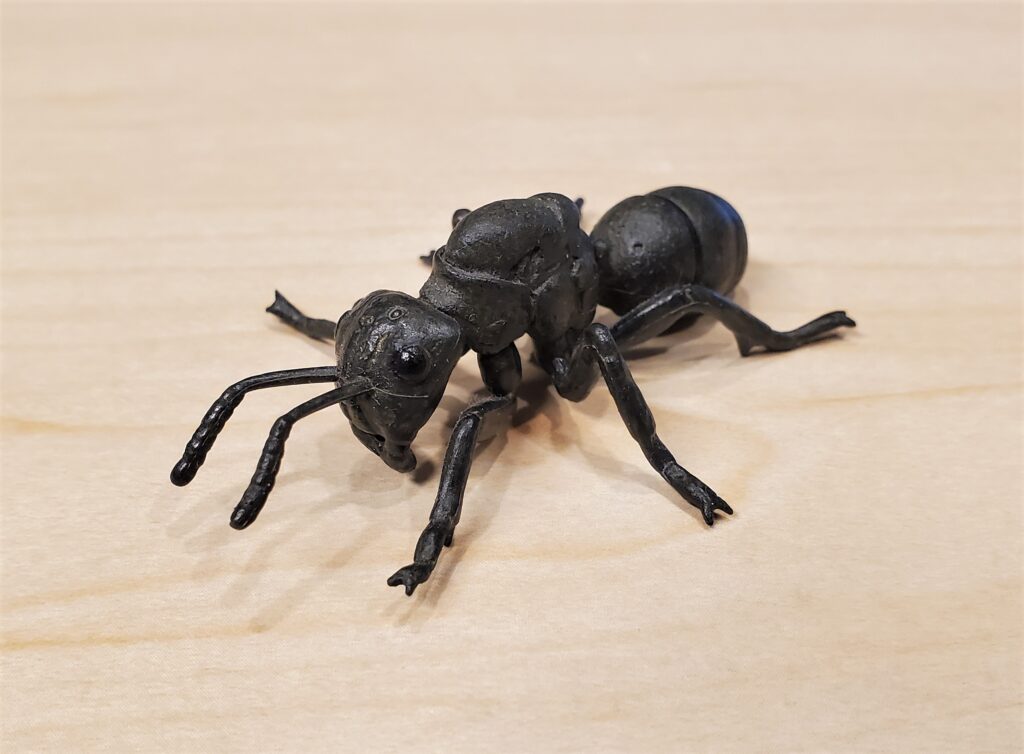
Next, the first worker which is carrying foodstuff, in this case the elytron of a ladybug:
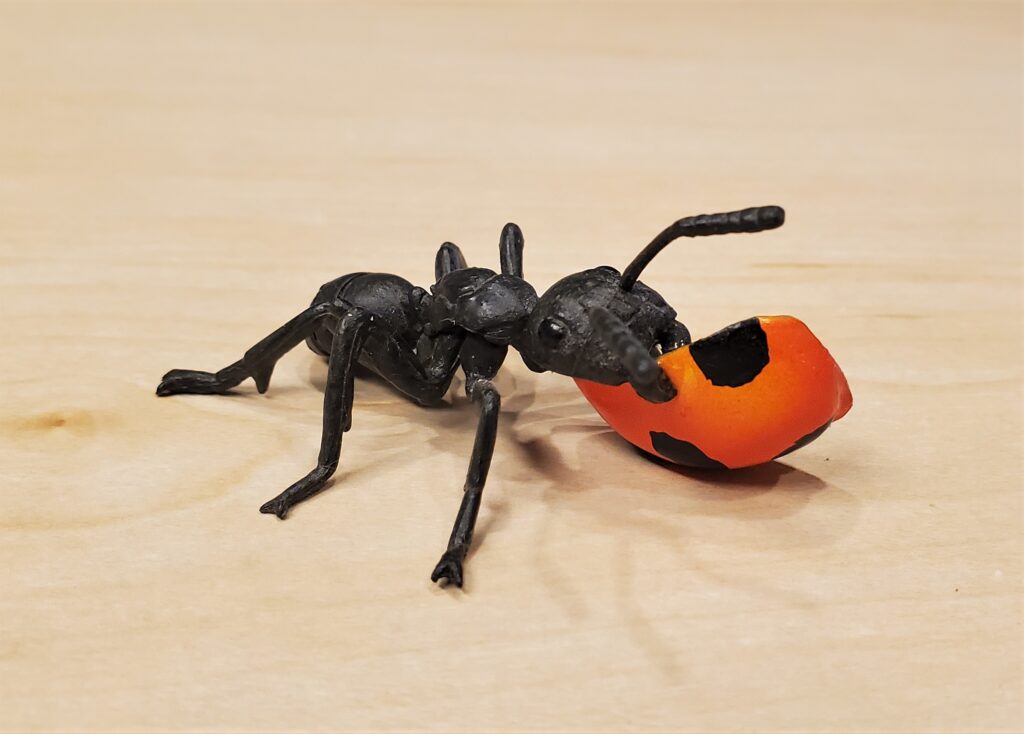
The next worker is carrying a larval ant (possibly the first figure of a larval hymenopteran?!?):
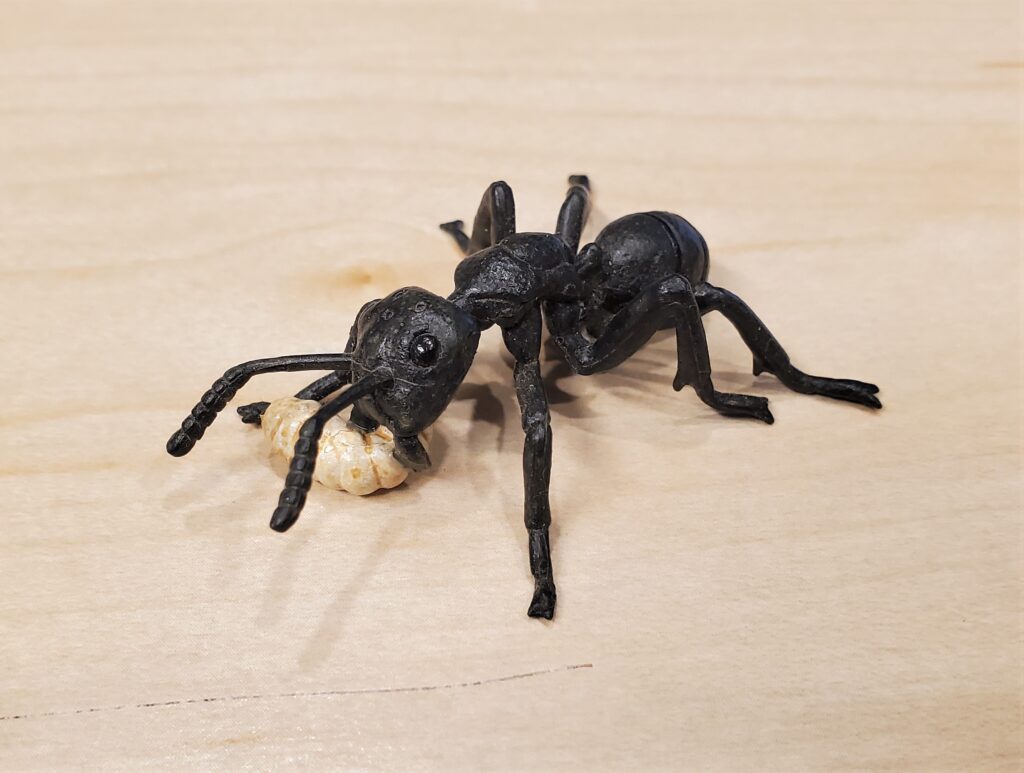
The third worker is also carrying foodstuff; in this case the head of a mantid:
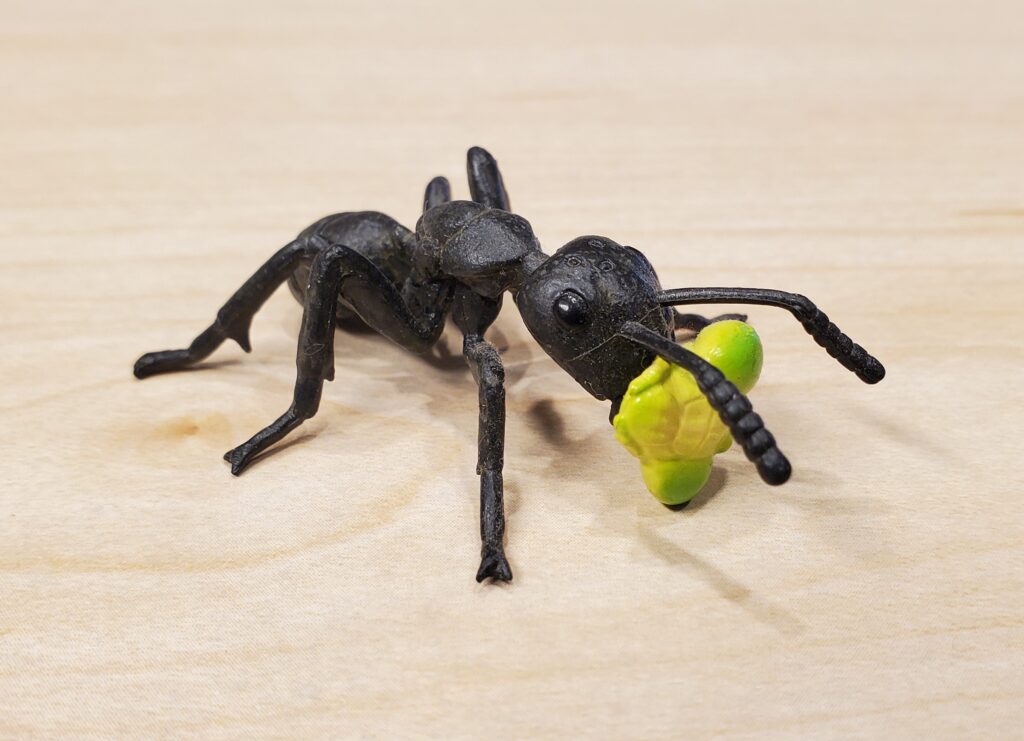
And lastly, just a pair or workers with no accessories:
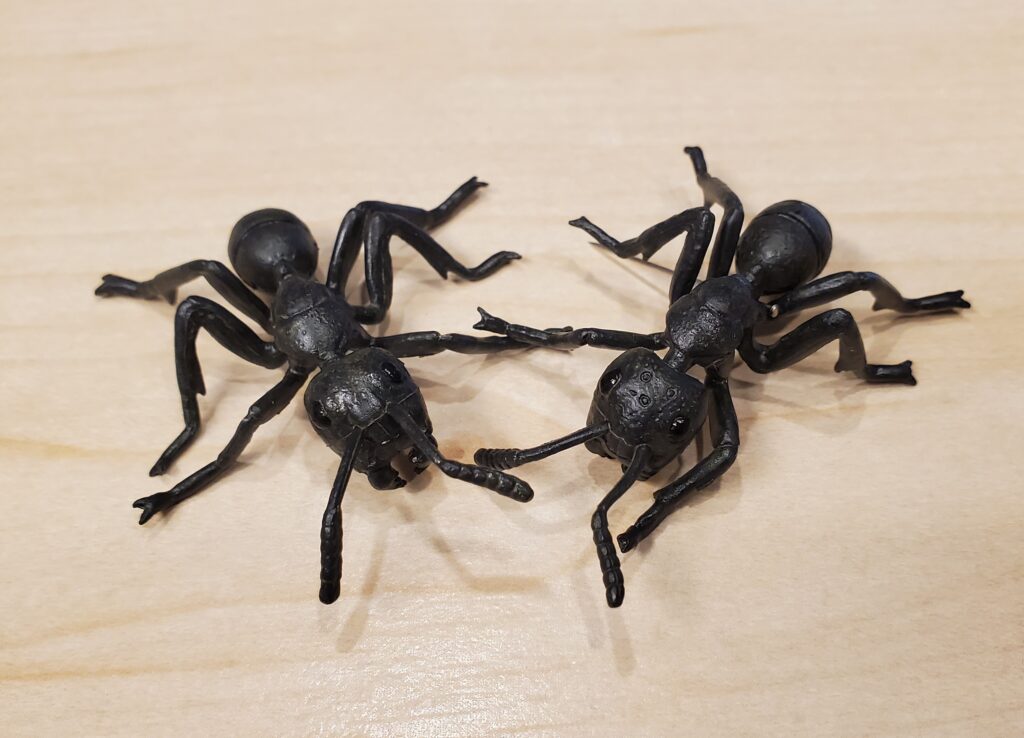
This is a fun collection and any component of it can give the collector a small exemplar of a rarely-made species of insect. However, I feel a set like this probably appeals most to insect specialists such as myself. I assume they are long retired, but they do still pop up on eBay periodically. The Takara version, which isn’t too much larger, is probably more easily accessible at the moment.
Disclaimer: links to Ebay and Amazon on the AnimalToyBlog are affiliate links, so we make a small commission if you use them. Thanks for supporting us!



